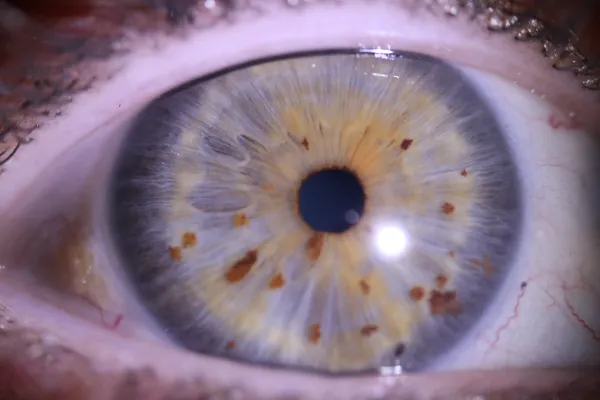Cobblestone Health
For Your Health, Naturally
Let's improve your health, naturally,
book and appointment by calling 403-850-5503
email [email protected]
or click to schedule your first appointment

Freckles in the Irides
If every eye is perfect, what do those extra flecks and washes of color you see in your clients’ eyes teach you about their health predispositions?
Of what use is this information?
Those ‘flecks and washes’ can appear in a wide variety of colors and shades of yellow, orange, brown, and red. We can also see black and white.
Typically, you will see a predominance of one pigment color. Rarely will you see the full range of pigment colors in one client’s eyes.
Each specific color gives us information about functional predispositions of an organ, organ system, or biochemistry pathway.
Layer this up with the base constitution, and you get a pretty clear picture of what the predispositions are.
For example, yellow in an iris (not in the sclera) provides information about predispositions of the kidneys and their impact on the acid balance of the body.
If the irides you’re assessing are lymphatic (blue), you already know they are predisposed to elevated tissue acid. Adding yellow pigment (might make the iris look green if it’s a wash of color instead of a freckle) suggests your client may have a very strong predisposition to acid imbalance.
The placement of the pigment helps us understand which organ(s) are at greater risk of being impacted by excessive acid.
If we see yellow pigment in the stomach reaction field, it suggests the kidneys may not always be able to remove enough acid from the blood, and the extra acid might be shunted to the stomach. Even though there are chemical differences between uric acid and digestive acid, according to Dr Jason Schnieder ND, acid being shunted to the stomach from the kidneys can create hyperacidity.
Seeing yellow in an iris would beg questions about uric acid (gout, joint stiffness, arthritic tendencies, kidney stones, pain in the side or back, frequent urination, and nausea. I’d also ask questions about stomach symptoms.
Pigments give us even epigenetic information. Since they are not always present at birth, we can monitor them and use them as a gauge for the potential development of imbalances.
Knowing the organ source of each pigment and having a solid background in anatomy & physiology can enable you to do a deeper assessment that can guide highly individualized protocols.
And yes, every eye is perfect and every eye gives us insight that can help us help our clients achieve better health.
© Cobblestone Health Ltd; 2024 and beyond. All rights reserved.



